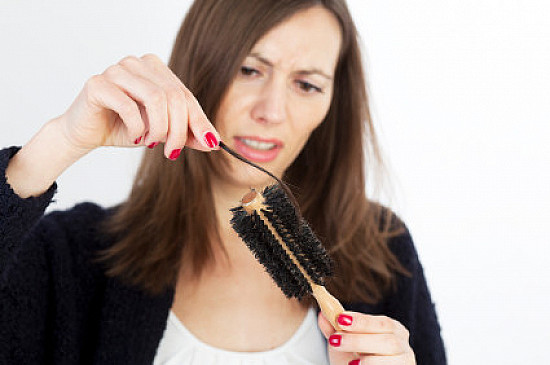Redefining Beauty Standards Through Hair Restoration
In modern society, hair symbolizes beauty and femininity, impacting self-image and confidence. Yet, many women face hair loss due to genetics, hormones, stress, and aging. Medical advancements offer viable hair transplant solutions, helping women restore confidence.
This article explores considerations and options for women undergoing hair transplants, focusing on enhancing beauty and femininity.
Understanding Female Hair Loss: Causes and Impact

Hair loss affects millions of women worldwide and can have a profound impact on their self-esteem and quality of life.
Unlike male pattern baldness, which often presents as receding hairlines or bald spots, female hair loss tends to be more diffuse, with thinning occurring across the scalp.
It is essential to understand the underlying causes of hair loss to determine the most appropriate treatment approach and achieve successful outcomes with hair transplant procedures.
Consultation and Evaluation: Customized Treatment Plans
Before undergoing a hair transplant, women undergo a comprehensive consultation and evaluation with a qualified hair restoration specialist.
During this initial assessment, the specialist carefully examines the scalp, evaluates the extent of hair loss, and discusses the patient’s goals and expectations.
Based on this information, a customized treatment plan is developed to address the individual needs of each patient and achieve the desired aesthetic outcomes.
Choosing the Right Technique: Follicular Unit Transplantation (FUT) vs. Follicular Unit Extraction (FUE)
Two primary techniques are commonly used in hair transplantation: follicular unit transplantation (FUT) and follicular unit extraction (FUE).
FUT involves removing a strip of hair-bearing scalp from the donor area, usually at the back of the head, and dissecting it into individual follicular units for transplantation.
FUE, on the other hand, entails the extraction of individual hair follicles directly from the donor area using a specialized punch tool, a technique often performed by skilled surgeons such as Dr. Bonaros.
The choice between these techniques depends on factors such as the extent of hair loss, donor hair availability, and the patient’s preferences.
Designing the Hairline: Achieving Natural and Feminine Results
Achieving aesthetically pleasing female hair transplant results in hinges on crafting a natural-looking hairline. This vital element frames the face, defining femininity.
Skilled surgeons meticulously design the hairline to seamlessly blend transplanted and existing hair, considering factors like density, texture, and direction for a soft, youthful appearance.
Donor Hair Selection: Ensuring Adequate Coverage and Density
In hair transplant procedures, donor hair is harvested from resistant areas, usually the back and sides of the scalp.
The quality and quantity of donor hair significantly impact the transplant’s success and overall aesthetic. In consultations, specialists assess the donor area to ensure an ample supply of healthy hair follicles.
Careful selection of donor hair with similar characteristics to the recipient area, such as color, texture, and thickness, allows surgeons to achieve natural-looking results with optimal coverage and density.
Post-Transplant Care and Recovery: Nurturing Newly Transplanted Hair
Following a hair transplant procedure, women must adhere to specific post-operative care instructions to promote healing and ensure the long-term success of the transplant.
Patients are advised to avoid activities that may disrupt the healing process, such as strenuous exercise, swimming, and exposure to direct sunlight.
Additionally, they may be prescribed medications to minimize discomfort, reduce swelling, and prevent infection.
As the transplanted hair follicles begin to take root and grow, patients will notice gradual improvements in hair density and coverage over the ensuing months.
Long-Term Maintenance: Preserving Results and Preventing Further Hair Loss
While hair transplant procedures offer a permanent solution to hair loss, it is essential for women to maintain a proactive approach to hair care and overall wellness to preserve their results and prevent further hair loss.
This may include adopting a healthy lifestyle, managing stress levels, and following a personalized hair care regimen recommended by their hair restoration specialist.
In some cases, additional treatments such as laser therapy, platelet-rich plasma (PRP) injections, or topical medications may be recommended to optimize hair growth and maintain overall scalp health.
Embracing Confidence and Self-Empowerment: A New Chapter in Beauty

Hair loss can profoundly impact a woman’s self-esteem and sense of femininity, but undergoing a hair transplant can be a transformative experience that restores confidence and redefines beauty.
By addressing the specific considerations and options available for women undergoing hair transplants, this article aims to empower women to take control of their appearance and embrace their unique beauty.
With the expertise and support of hair restoration specialists, women can embark on a journey to reclaim their hair and rediscover their confidence, one strand at a time.
Conclusion: Elevating Beauty and Femininity Through Hair Transplantation
Hair transplantation offers women a proven and effective solution for addressing hair loss and enhancing their beauty and femininity.
With advancements in surgical techniques and personalized treatment approaches, women can achieve natural-looking results that seamlessly blend with their existing hair and facial features.
By addressing the specific considerations and options available for women undergoing hair transplants, this article aims to empower women to make informed decisions about their hair restoration journey and embrace their unique beauty with confidence.

Jean Smith is a fitness enthusiast and blogger who focuses on fitness and a healthy lifestyle. She is passionate about assisting people in living healthier lifestyles and is constantly on the lookout for new and creative methods to stay fit and healthy. Her articles are excellent resources for anyone interested in improving their health and fitness.
